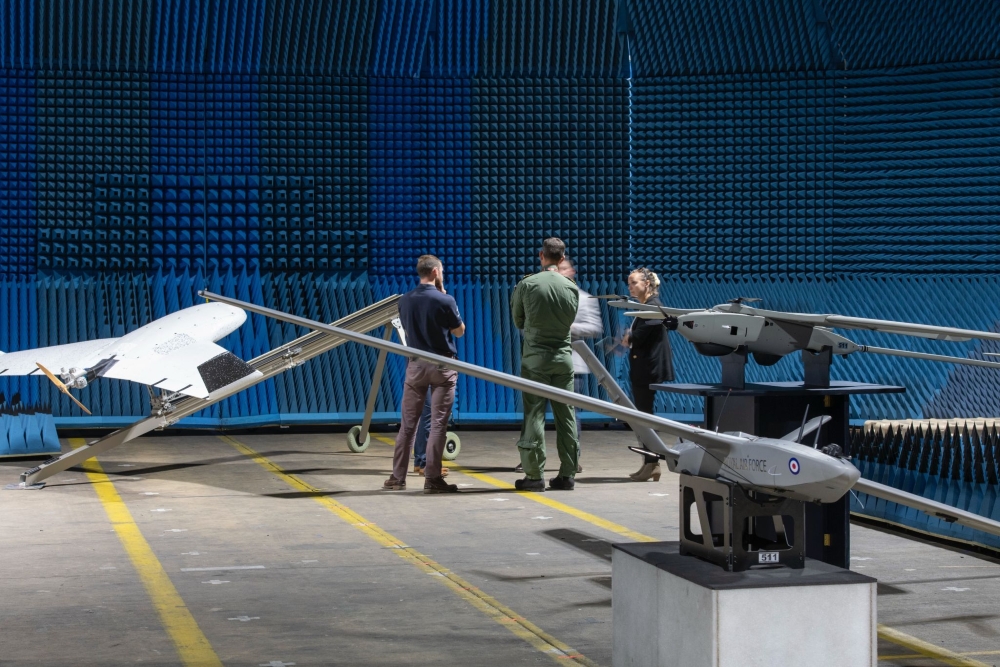
The UK MoD published a first preliminary market engagement notice to engage industry on what will become the "Autonomous Collaborative Platform Tranche 2", where Tranche 1 is the STORMSHROUD system put into service earlier this year. The STORMSHROUD, assigned to 216 Sqn RAF, is a Tekever AR3 drone fitted with the Leonardo UK BriteStorm jammer payload. A fleet, believed to number 24 drones, has been acquired under a circa 19 million pounds investment.
The indicative budget for Tranche 2 at this stage is directly comparable, being given as 20 million (24 when including VAT).
The MoD, in accordance to its new procurement approach, is leaving great freedom to industry to put forward its proposals about the art of the possible, only offering a broad indication of the “areas of interest”. The MoD wants drones with greater management of their Signatures to enhance the ability to penetrate enemy defences: this includes radar stealth and other measures. This is because the ACP must “be designed to operate in collaboration with the fourth-, fifth- and future generations of combat aircraft and to operate from the UK aircraft carriers”, as is specified in accordance to Strategic Defence Review policy.
The MoD wants proposals for other Electronic Warfare payloads and mission systems, but also for a wider range of electromagnetic warfare payloads delivering “effects across the electromagnetic spectrum to disrupt, deny, degrade, or destroy enemy systems”, which implies being open to more offensive, destructive solutions such as EMP.
The MoD is also looking at kinetic strike, with the assumption that the drone would be one-way only, to keep costs down. As evidenced by the low budget, this project is still focused chiefly on what the RAF identifies as “Tier 1” ACPs: low cost, fully attritable.
The market engagement phase is open into September, and the information gathered will inform the project ahead of the issue of a formal tender which is planned for 27 April 2026.
The current assumption is that a 2-year contract to acquire the new capability would be in effect from 29 April 2027 to 29 April 2029.
While this is “formally” Tranche 2 of ACP, there is uncertainty on what undeclared capabilities might be, in some measure or another, in service. The RAF has repeatedly showcased a prototype flying wing one-way drone, with a pusher propeller propulsion arrangement, which is apparently named LANNER by the MoD and is credited with a very long range (“can fly from the UK to Italy”) with a potential explosive payload.
LANNER has appeared at multiple events now. It is visually very similar to a Qinetiq development that the company calls MALFY but it’s not clear if they are the same thing.
MALFY has last appeared in a Qinetiq anechoic chamber alongside STALKER (entering service with the British Army under Project TIQUILA) and STORMSHROUD at the launch of the new “Droneworks” unit, a Qinetiq team providing a UAS test and evaluation hub for the RAF's Air and Space Warfare Centre (ASWC), the RAF's Rapid Capabilities Office (RCO) and 744 Naval Air Squadron which serves as the Joint Uncrewed Air System Test and Evaluation Squadron for the MoD as a whole.
Considering also the publishing of at least two tenders for catapults for drones in formats that do not match officially in-service platforms, (40, 75 and most recently 125 kg), and keeping in mind that the UK is a major supplier of drone solutions to Ukraine, also for long range strike, there might be more than one platform already “operational” in some form.








.png)
